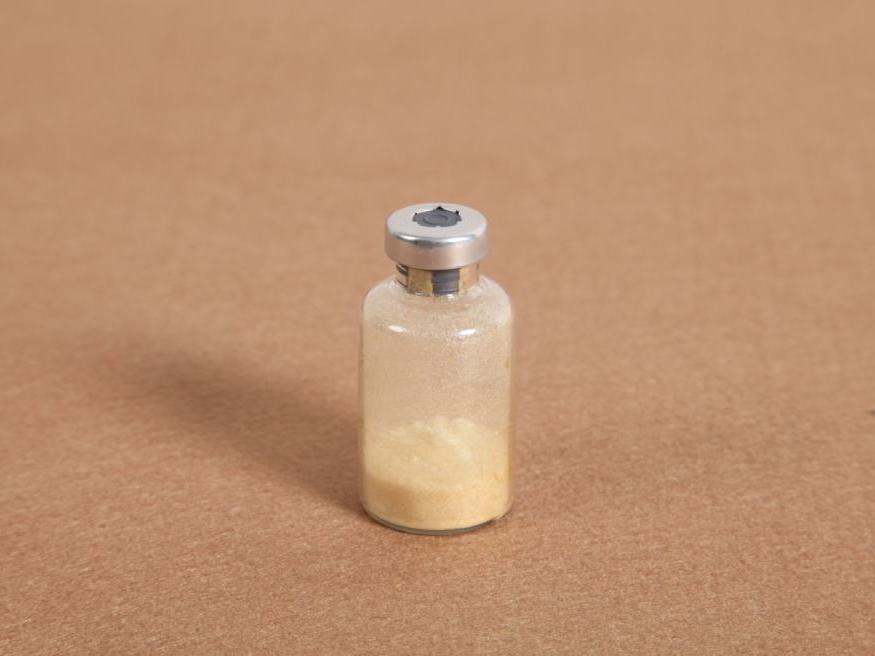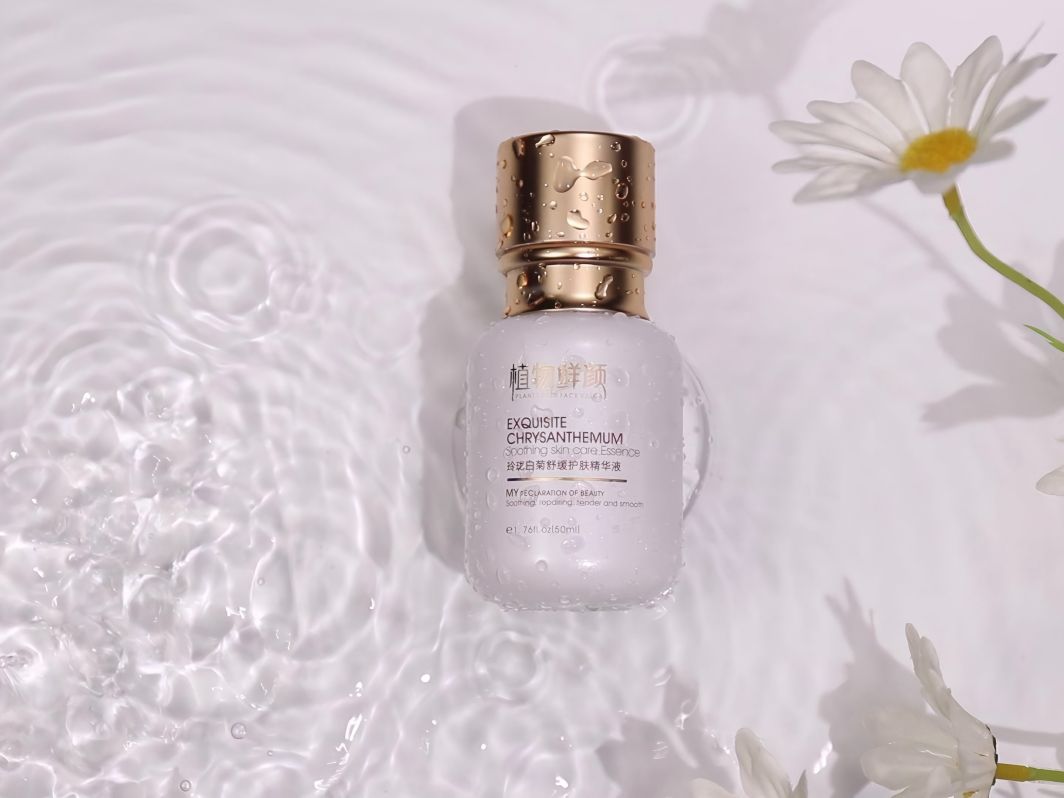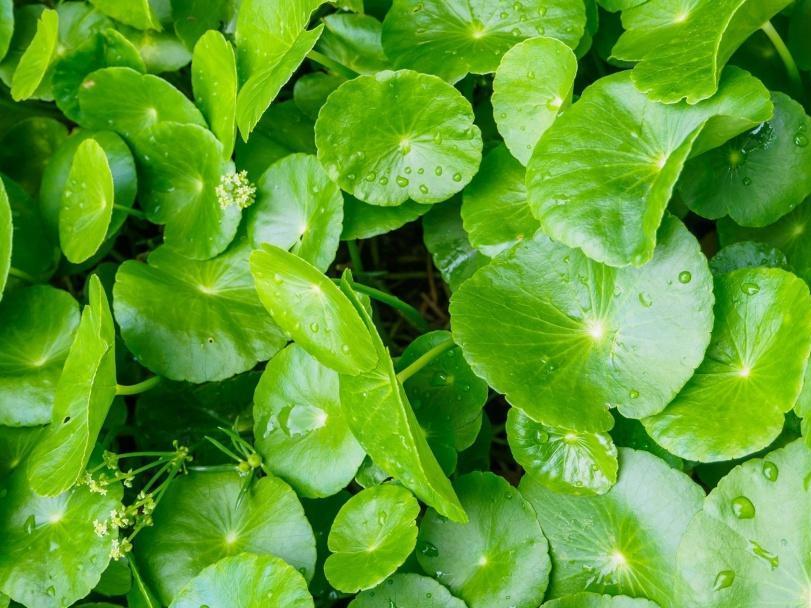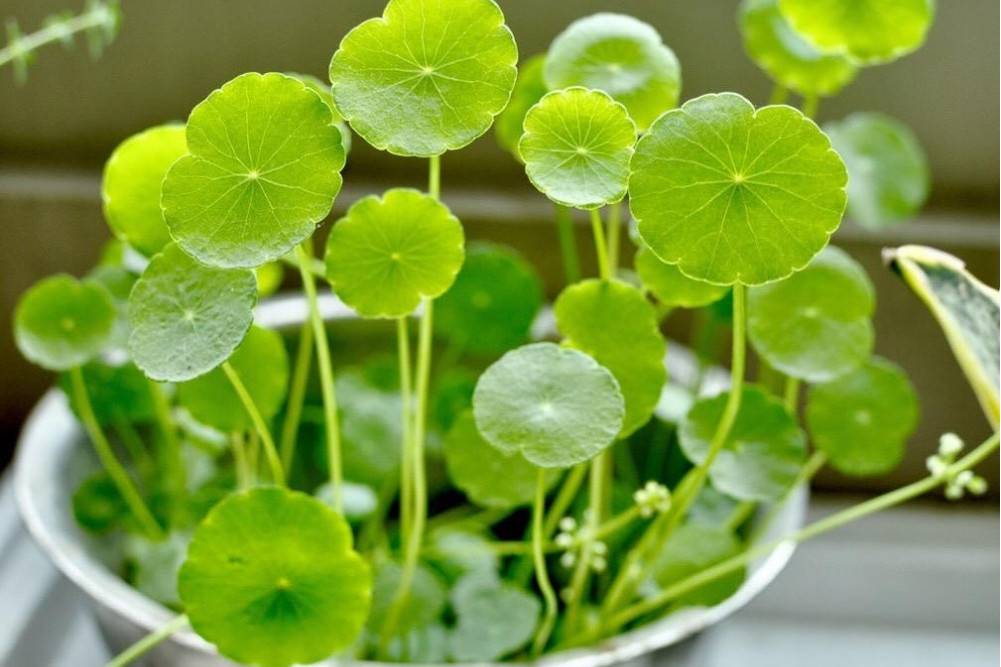What Is Centella Asiatica Triterpenes?
Centella asiatica is the dried whole plant of the plant Centella asiatica (L.) Urban, family Apiaceae. It is also known as Pengdawan, Mahuicao and Laojiawan. It often curls into a ball shape, with a cylindrical root, a slender and curved stem, and leaves that are mostly shriveled and broken. The umbels are axillary, and the double-suspended fruit is flat-round. It is widely distributed in Southwest China, Central and Southern China, and East China. Centella asiatica is bitter, pungent and cold in nature, entering the liver, spleen and kidney channels. It has the effects of clearing away heat and dampness, detoxifying and reducing swelling (Chinese Pharmacopoeia 2010 Edition I)1].
The study of the chemical composition of Centella asiatica began in 1937. A variety of chemical components have been isolated from the whole herb of Centella asiatica, including alkaloids, flavonoids, polyacetylenes, monoterpenes, sesquiterpenes and triterpenes, mainly triterpenes and their glycosides. Most of the research reports on the pharmacological activity of Centella asiatica also focus on the triterpenoids asiaticoside and madecassoside2). This article reviews the research progress on the chemical composition and pharmacological activity of triterpenoids in Centella asiatica in recent years, with a view to providing a reference for further research on Centella asiatica.
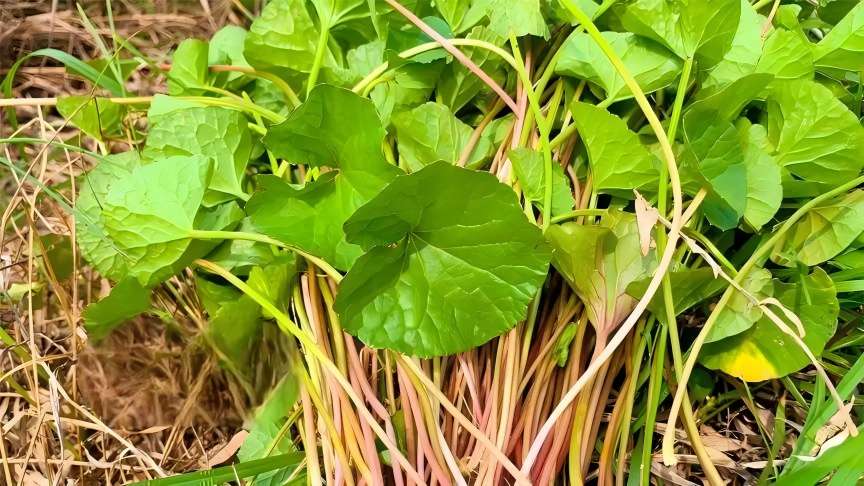
1 Triterpenoids in Centella asiatica
The triterpenoids in Centella asiatica are mainly composed of the pentacyclic triterpenoid skeleton asiaticoside, madecassoside and asiaticoside B, which account for about 80% of the total saponins in Centella asiatica [3]. Most of the triterpenoids contain a ursane or oleanane structure and often exist in pairs. The five-ring triterpenoids in Centella asiatica can be divided into three parent nuclei, A, B, and C, according to the position of the double bond in the skeleton (see Figure 1). So far, a total of 41 five-ring triterpenoids have been isolated from Centella asiatica. In addition, our research group has also isolated 15 dammarane-type tetracyclic triterpene saponins from the n-butanol fraction of Centella asiatica for the first time [4].
1.1 Pentacyclic triterpenes
A Mother nucleus structure: The double bond in the skeleton is at 12 and 13. It is one of the main active ingredients of Centella asiatica. There are many types of it, and 31 compounds of this type have been reported, see Table 1. The 9 pairs of 18 compounds in the table, 1 and 2, 5 and 6, 8 and 9, 13 and 14, 15 and 16, 17 and 18, 19 and 20, 24 and 25, and 28 and 29, are respectively the ursane and oleanane isomers.
B Nuclear structure: The double bond in the skeleton is at 13 and 18. Matsuda et al. S] isolated it from Centella asiatica in Sri Lanka. The nuclear structural formula is shown in Figure 1.
C Nuclear structure: The double bond in the skeleton is at 20 and 21. Yu et al. [19 isolated it from Centella asiatica in Hebei, China. The nuclear structural formula is shown in Figure 1.
Other types: Centella asiatica also contains isothankuniside, euscaphic acid and betulic acid, etc., the structural formulae of which are shown in Figure 2.
1.2 Tetracyclic triterpenes
Our research group has, for the first time, isolated 15 dammarane-type tetracyclic triterpene saponins from Centella asiatica by various separation methods [4], The chemical structures are shown in Figure 3. 36 and 37, 38 and 39, 41, 42 and 43, 40, 44, 48, 49 and 50, 45, 46 and 47 in the structure are isomers; 40 and 44, 41 and 43 are diastereoisomers.
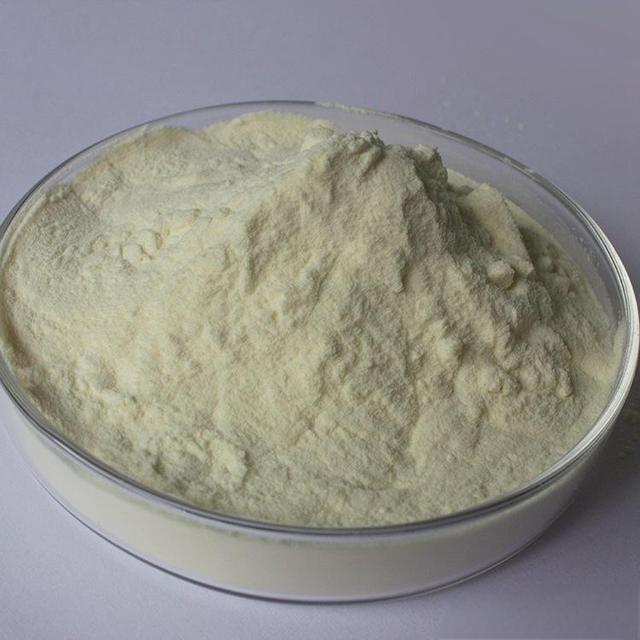
2 Pharmacological effects of triterpenoid components
Centella asiatica is listed as a medium-grade herb in the Shennong Bencao Jing (Shennong's Classic of Materia Medica), and is a medicinal herb with the effect of treating various heat syndromes, carbuncles and scrofula. It is suitable for treating bruises, damp-heat jaundice, heatstroke diarrhea, bloody discharge and carbuncles and sores. The effective triterpenoid ingredients in centella asiatica include asiaticoside, madecassoside, asiatic acid and madecassic acid. Modern pharmacological studies have shown that they have various pharmacological activities, such as promoting skin damage repair, anti-depression, antibacterial, anti-central inhibition, anti-tumor and vasodilation.
2.1 Effect on the skin system
2.1.1 Anti-scar hyperplasia
Centella asiatica has been clinically used for scar treatment due to its anti-scar hyperplasia effect, but its anti-scar mechanism has not yet been fully clarified. Zhang Tao et al. [25] found that asiaticoside reduced the expression of transforming growth factor-β₁ (TGF-β,) mRNA and increased the expression of TGF-β₃ mRNA, resulting in a significant decrease in the expression of matrix metalloproteinase inhibitor-1 (TIMP,) and an increase in the relative ratio of matrix metalloproteinase-1 (MMP,)/TIMP₁, thereby promoting the degradation of type I collagen to reduce scar hyperplasia. Dai Libing et al. [26] showed that the mechanism of action of asiaticoside in the treatment of scars may be related to the inhibition of the mRNA and protein expression of the ras homolog gene family (RhoA), Rho kinase-I (ROCK-I) and connective tissue growth factor (CTGF) mRNA and protein expression, and may be related to the regulation of CTGF expression in proliferative scar fibroblasts (HSFb) through the RhoA/ROCK-I signaling pathway. Qi et al. [27] showed through experiments that that asiaticoside inhibits scar hyperplasia mainly by increasing the expression of signal transduction molecule-7 (Smad7), which inhibits the pathological effects of TGF-β by regulating the transduction signal of the inhibitory receptor Smad protein (R-Smads) (inducing Smad7 from the nucleus to the cytoplasm), thereby inhibiting fibroblast proliferation.
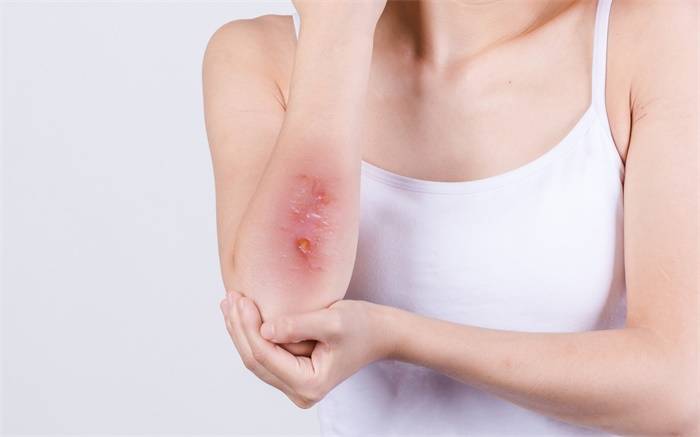
2.1.2 Promotes skin damage repair
Type I and III collagen are the most important structural and functional protein components in the connective tissue of the skin. When applied to cultured fibroblasts in vitro, asiaticoside can significantly increase the synthesis of type I and II collagen in the cell and extracellular matrix, and upregulate genes related to skin damage repair, thereby increasing extracellular matrix synthesis to accelerate the skin damage repair process [28]. It can also effectively promote the expression of cyclin B1 and proliferating cell nuclear antigen, significantly advance the S+G₂ phase of the cell cycle, thereby accelerating cell proliferation and promoting wound healing [29]. Hydroxycentella asiatica saponin promotes wound healing in a dose-dependent manner, reduces inflammatory cell infiltration, enhances skin fibroblast proliferation, and promotes skin angiogenesis. Higher doses can also reduce the content of nitric oxide and malondialdehyde in burn tissue and increase the content of reduced glutathione and hydroxyproline [30].
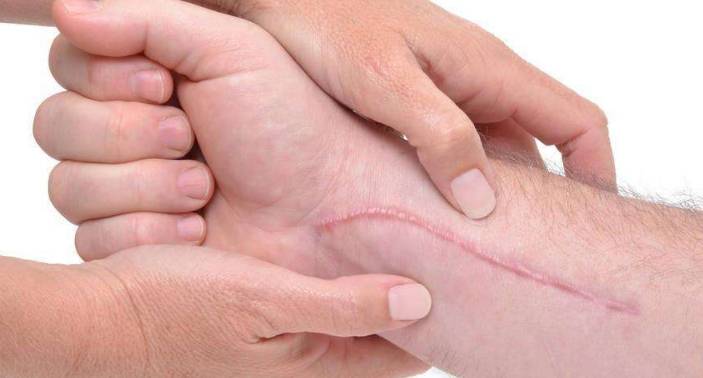
2.2 Effects on the nervous system
2.2.1 Antidepressant
The current antidepressants are generally ineffective and prone to relapse, and they have many adverse reactions. The pathogenesis of depression has not yet been elucidated. From the earliest monoamine hypothesis to the hypothalamic-pituitary-adrenal axis negative feedback disorder, to the cellular molecular mechanism, all of these may be related to the pathogenesis of depression. According to the monoamine hypothesis of depression pathogenesis, the action of antidepressants lies in their ability to enhance the function of central noradrenergic or serotonergic nerves. Cao Weiwei et al. [31] showed that asiaticoside can produce a synergistic effect with 5-hydroxytryptophan, significantly increasing the number of head-shaking movements in mice, and has an inhibitory effect on the metabolism of tryptamine hydrochloride, indicating that it can inhibit the activity of monoamine oxidase in the body, causing an accumulation of tryptamine hydrochloride, which aggravates the epileptic-like seizures in rats. This suggests that the antidepressant effect of asiaticoside may be related to its enhancement of the neurotransmitter serotonin function in the brain and inhibition of monoamine oxidase. Chen Yao et al. [32] showed that Centella asiatica total saponins can reduce the serum cortisol levels of depressed rats and increase the levels of 5-hydroxytryptamine, norepinephrine and dopamine and their metabolites in the brain, indicating that the antidepressant activity of Centella asiatica total saponins is related to improving the function of the hypothalamic-pituitary-adrenal axis and increasing the levels of amine neurotransmitters.
2.2.2 Protecting neurons
Hydroxycentella asiatica saponin has a protective effect on motor neuron degeneration in mice with copper and zinc superoxide dismutase mutations, and can prolong the survival time of mice [33]. High (120 mg/kg), medium (60 mg/kg) and low (30 mg/kg) doses of madecassoside can significantly inhibit the activity of monoamine oxidase B in the brain; neutralizing low doses of madecassoside significantly improves the learning and memory abilities of mice and reduces neuronal damage in the CAI region of the hippocampus caused by chronic aluminum poisoning in mice. The results of the study showed that madecassoside has a protective effect on hippocampal neurons in mice with chronic aluminum poisoning, thereby improving learning and memory abilities and producing a therapeutic effect on the model of dementia {34).
Jew et al. 35] found that madecassic acid derivatives can antagonize the neurotoxicity produced by β-amyloid, and carried out a structure-activity relationship study, the results showed that The protective activity of asiatic acid against B103 cells was 97%, which was much stronger than that of methyl asiatic acid (58%), octyl methoxy asiatic acid (22%) and asiaticoside (24%). This seems to indicate that the free carboxylic acid at the 28-position is very important, However, the 28-position of asiatic acid into a tetrahydropyran ester has a protective activity of up to 92% on B103 cells; the 3- and 23-position hydroxyl groups are more important than the 2-position hydroxyl group, and the activity of asiatic acid decreases. These results indicate that hydrogen bond interactions play a key role in binding to neuronal receptors.
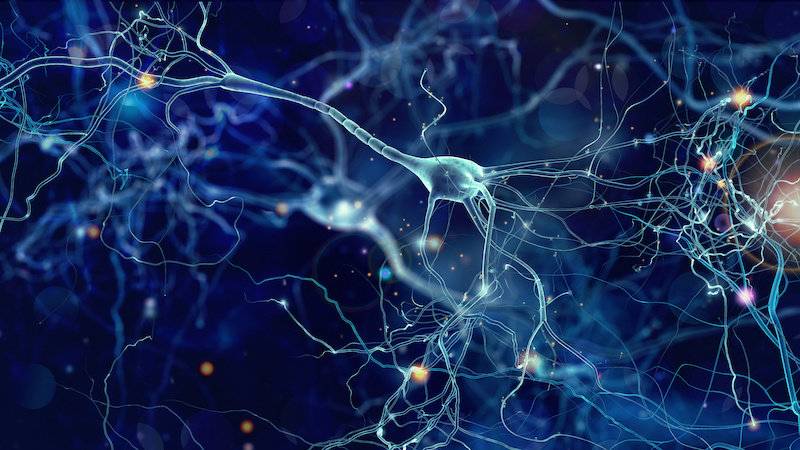
2.2.3 Analgesic
In mice with pain hypersensitivity induced by intraperitoneal injection of lipopolysaccharide, asiaticoside can significantly reduce the number of acetic acid writhes and increase the pain threshold, indicating that asiaticoside has a significant analgesic effect, which may be related to the reduced expression of myeloperoxidase, nitric oxide and plasma α-tumor necrosis factor in mouse brain tissue [36]. In the high-dose group, total asiaticoside prolonged the pain threshold response time in mice, and the medium-dose group showed a trend towards prolongation. The percentage increase in pain threshold was greater in both groups, indicating that total asiaticoside has a certain analgesic effect on pain caused by thermal stimulation in experimental mice [37].
2.3 Anti-inflammatory effect
Lipopolysaccharide-induced sepsis further causes the most common and severe systemic inflammatory response syndrome and acute lung injury. In an inflammation model induced by lipopolysaccharide in RAW 264.7 macrophages, asiaticoside significantly inhibited the activation of the RAW 264.7 cell nuclear transcription factor NF-kB, inhibited the expression of pro-inflammatory factors TNF-α and L-1, and at the same time up-regulated the expression of the anti-inflammatory factor L-10, thereby maintaining the balance between the pro-inflammatory and anti-inflammatory systems and exerting an anti-inflammatory effect [38]. Hydroxycentella asiatica can significantly reduce the activity of myeloperoxidase, a liver tissue inflammatory factor, the content of prostaglandin E₂ in brain tissue and L-6 in plasma in rats with fever model prepared by intraperitoneal injection of lipopolysaccharide [39].
Centella asiatica administered by gavage can dose-dependently reduce the symptoms of arthritis in collagen-induced arthritis mice, inhibit lymphocyte proliferation response, decreased the high expression of cyclooxygenase-2 and the content of prostaglandin E₂ in the soft tissue of the ankle joint, and lowered the levels of the inflammatory factors TNF-α and L-6 in the serum. Meanwhile, pathological examination showed that it could improve local arthritis symptoms, inhibit the proliferation of mouse synoviocytes, and reduce the infiltration of inflammatory cells [40].
2.4 Protective effect on damage to various organs
Centella asiatica has a protective effect against acute kidney injury caused by sepsis due to cecal ligation and puncture. This is manifested by a decrease in mortality in mice, and a dose-dependent reduction in kidney tissue damage, as well as a decrease in serum urea nitrogen, creatinine, L-6 levels and the content of kidney-inducible nitric oxide synthase protein in the kidney [41].
Centella asiatica glycosides have a protective effect on mice with acute lung injury induced by lipopolysaccharides, which is manifested as a dose-dependent reduction in lung tissue damage in the model group, a reduction in pulmonary edema, a reduction in neutrophil infiltration, inhibition of protein exudation, and inhibition of myeloperoxidase activity in lung tissue [42].
Madecassoside has a certain liver protective effect, significantly reducing the serum alanine aminotransferase and aspartate aminotransferase activities and the amount of nitric oxide in the liver tissue of mice with carbon tetrachloride-induced acute liver injury. It also inhibits the expression of inducible nitric oxide synthase and and the expression of cyclooxygenase-2 protein in the liver tissue. The pathological sections showed that the degree of lesion in the group with madecassoside was much lower than that in the model group [43]. Zhao et al. (44) modified the carbon at positions 2, 3, 11, 23 and 28 of madecassoside and studied the protective effect of these derivatives on the liver. The results showed that most derivatives had significant hepatoprotective effects on carbon tetrachloride or aminogalactose-induced acute liver injury models in rats.
2.5 Antitumor effect
Centella asiatica extract has an inhibitory effect on the proliferation of L₉29 and CNE cells cultured in vitro, and also inhibits the growth of S180 transplanted tumors. It can also increase the survival time of S180 mice, preliminarily indicating that centella asiatica extract has antitumor activity45]. Centella asiatica acid can dose-dependently induce DNA fragmentation in HePG2 human liver cancer cells. The apoptosis of HePG2 cells induced is mainly associated with the release of endogenous calcium ions. Centella asiatica acid can promote the expression of the P53 gene by inducing intracellular calcium ion release, ultimately leading to apoptosis of HepG2 cells. In addition, concentrations above 30 μM exhibit significant cytotoxicity to HePG2 cells [46]. Park et al. 47] showed that asiatic acid can induce apoptosis of human melanoma cells SK-MEL-2. The mechanism of action may be to induce apoptosis by increasing intracellular reactive oxygen species (ROS), increasing the expression of the Bax gene, changing the Bax/Bcl-2 ratio, and then activating caspase-3.
Studies have also shown that asiaticoside can induce apoptosis in tumor cells and has a synergistic effect with vincristine [48]. Hsu et al. 49 found that asiatic acid can induce apoptosis in human breast cancer cells MCF-7 and MDA-MB-231 by activating the extracellular signal-regulated protein kinase ERK1/2 and mitogen-activated protein kinase p38 signaling pathways. The tetracyclic triterpenoid ginsenosides Rg3 (compound 43), Rk1 (compound 38) and Rg5 (compound 39) are the main ginsenosides in ginseng. Yoo et al. [50] obtained an effective component of ginsenosides-rich ginseng, KG135, from ginseng. In vitro cell experiments showed that KG135 can significantly inhibit the growth of DU145 and PC-3 human prostate cancer cells. It can inhibit the growth of DU145 cells transplanted into mice in a time-dependent manner, and no toxicity was observed. Studies of tumor cell tissues have found that the mechanism of action may be related to the inhibition of cell cycle proteins and the regulation of TNFRSF25 and ADRA2A gene expression.
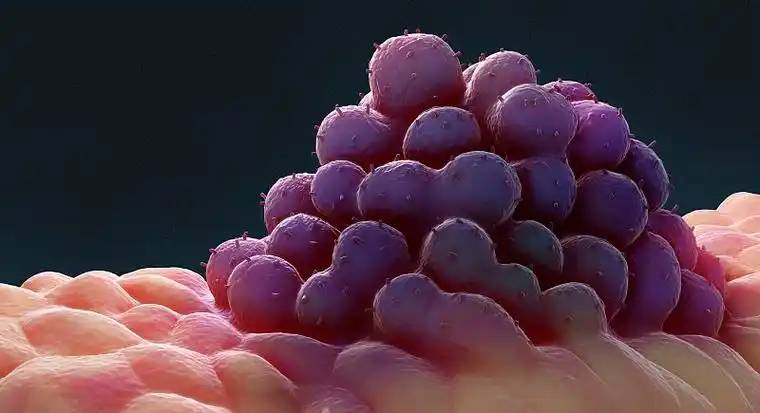
2.6 Other pharmacological effects
Centella asiatica water extract and asiaticoside can promote the healing of gastric ulcers in model group rats by inhibiting inducible nitric oxide synthase [S¹; hydroxy asiaticoside can reduce the systolic pressure, diastolic pressure, mean arterial pressure and heart rate of hypertensive model rats, while having no significant effect on the blood pressure and heart rate of normal rats [52]; Hydroxycentella asiatica has a significant preventive and protective effect on myocardial ischemia-reperfusion injury in rabbits. The mechanism of action may be related to the inhibition of lipid peroxide production, increased superoxide dismutase (SOD) activity, anti-inflammation and anti-myocardial cell apoptosis [53].
Yi et al. (54) showed that ginsenoside can significantly increase coronary blood flow in rats undergoing ischemia-reperfusion. The mechanism of action is related to the activation of the PI3K/Akt/-eNOS signaling pathway, which increases the amount of nitric oxide. In addition, vasodilation is also related to prostaglandins, endothelial hyperpolarization factors, and carbon monoxide. Glycogen phosphorylase inhibitors are potential new anti-diabetic drugs that are characterized by their ability to lower blood sugar while also providing significant protection against ischemic myocardial injury, which is particularly important for diabetic patients with ischemic cardiovascular complications. Zhang et al. [S⁵3 used asiatic acid as a lead compound, modified its structure, and synthesized a total of 24 asiatic acid derivatives. The inhibition of rabbit muscle glycogen phosphorylase activity was tested to study the structure-activity relationship of new pentacyclic triterpenoid glycogen phosphorylase inhibitors. The results showed that benzyl asiatic acid (ICs₀=3.8μmol/L) was more active than asiatic acid (IC₅o=17μmol/L), and the 2-hydroxy α conformation was more active than the β conformation.

3 Conclusion
A study of the triterpenoids in Centella asiatica and their pharmacological effects has found that the secondary metabolites are mainly pentacyclic and tetracyclic triterpenoids. The pharmacological activities of these compounds are well demonstrated in repairing skin damage, protecting neurons, and anti-inflammation. They have been widely used in clinical practice with remarkable results. Although research on Centella asiatica has achieved certain results, there have been relatively few systematic studies on the active ingredients and active parts of Centella asiatica targeting a specific indication or pharmacological effect. The main focus has been on the pharmacological research of asiaticoside and madecassoside. Therefore, it is necessary to further study the relationship between other chemical components and pharmacological effects of Centella asiatica in order to better utilize the biological activity of Centella asiatica medicinal materials and promote its application in various fields, so as to achieve more reasonable comprehensive utilization.
References:
[1] Editorial Committee of the Flora of China, Chinese Academy of Sciences. Flora of China [M]. Beijing: Science Press, 1977, 31.
[2] Brinkhaus B, Lindner M, Schuppan D, et al. Chemical, pharmacological and clinical profile of the East Asian medical plant Centella asiatica [J]. Phytomedicine, 2000, 7(5): 427-448.
[3] Chen Yunyun, Shao Yan, Zhou Jing, et al. Content research of asiaticoside and its preparations. Ⅱ. Determination of asiaticoside, madecassoside and asiatic acid in asiaticoside by HPLC [J]. Chinese Journal of Pharmaceutical Industry, 2010, 41(4): 276-279.
[4] Weng XX,Shao Y,Chen YY,et al.Two new dammarane monodesmosides from Centella asiatica [J].JAsian Nat Prod Res,2011,13(8):749-755.
[5] Matsuda H,MorikawaT,Ueda H,et al.Medicinal foodstuffs. XXVI.Inhibitors of aldose reductase and new triterpene and its oligoglycoside,centellasapogenolA and centellasaponin A, from Centella asiatica(Gotu Kola)[J].Heterocycles,2001,
55(8):1499-1504.
[6]Mahato SB,Sahu NP,Luger P,et al.Stereochemistry of a triterpenoid trisaccharide from Centella asiatica.X-ray determination of the structure of asiaticoside [J].JChem Soc Perkin Trans I Phys Org Chem,1987,(10):1509-1515.
[7] Jiang ZY,Zhang XM,Zhou J,et al.New triterpenoid glycosides from Centella asiatica[J].Helv Chim Acta,2005,88(2):297-303.
[8] Liu Yu, Zhao Yuqing. Study on the chemical composition of Centella asiatica [J]. Chinese Modern Traditional Medicine, 2008, 10(3): 7-9.
[9] Singh B, Rastogi RP, et al. A reinvestigation of the triterpenes of Centella asiatica [J]. Phytochemistry, 1969, 8(5): 917-921.
[10] Yu Qianlin, Gao Wenyuan, Zhang Yanwen, et al. Study on the chemical constituents of Centella asiatica [J]. Chinese Journal of Traditional Chinese Medicine, 2007, 32(12): 1182-1184.
[11]Sahu NP,Roy SK,Mahato SB.Spectroscopic determination of structures of triterpenoid trisaccharides from Centella asiatica[J].Phytochemistry,1989,28(10):2852-2854.
[12] Rastogi RP,Dhar ML.Chemical examination of Centella asiatica.Ⅱ.Brahmoside and brahminoside [J].Indian J Chem,1963,1:267-269.
[13] Matsuda H,Morikawa T,Ueda H,et al.Medicinal foodstuffs. XX VII.Saponin constituents of Gotu Kola(2):structures of new ursane-and oleanane-type triterpene oligoglycosides, centellasaponins B,C,and D,from Centella asiatica cultivated in Sri Lanka[J].Chem Pharm Bull,2001,49(10):1368-1371.
[14] Weng Xiaoxiang, Chen Yunyun, Shao Yan, et al. A new ursane-type triterpene glycoside from Centella asiatica. [J]. Chinese Journal of Pharmaceutical Industry, 2011, 42(3): 187-188.
[15]Kuroda M,Mimaki Y,Harada H,et al.Five new triterpene glycosides from Centella asiatica [J].Nat Med,2001,55(3):134-138.
[16]Rumalla CS,Ali Z,Weerasooriya AD,et al.Two new triterpene glycosides from centella asiatica [J].Planta Med,2010,76(10):1018-1021.
[17]Bhattacharyya SC.Constituents of Centella asiatica. I Structure of the triterpene acids [J].JIndian Chem Soc, 1956,33:630-634.
[18]Muslim T,Chowdhury TA,Mosihuzzaman M.Isolation and characterization of a triterpenic acid from Centella asiatica(thankuni)leaves [J].Dhaka Univ JSci,1995, 43(2):223-228.
[19]Yu QL,Duan HQ,Gao WY,et al.A new triterpene and a saponin from Centella asiatica [J].Chin Chem Lett,2007,18(1):62-64.
[20]Dutta T,Basu UP.Terpenoids:Part Ⅲ.Isolation of isothankuniside and constitution of isothankunic acid from Centella asiatica Linn.(Urb.)[J].Indian J Chem,1968,6(9):543-545.
[21]Yu QL,Duan HQ,Takaishi Y,et al.A novel triterpene from Centella asiatica [J].Molecules,2006,11(9):661-665.
[22]Shukla YN,Srivastava R,Tripathi AK,et al.Characterization of an ursane triterpenoid from Centella asiatica with growth inhibitory activity against Spilarctia oblique[J].Pharm Biol, 2000,38(4):262-267.
[23]Rastogi RP,Sarkar B,Dhar ML.Chemical examination of Centella asiatica.I.Isolation of the chemical constituents [J].JSci Ind Res,1960,19B:252-257.
[24]Nhiem NX,Tai BH,Quang TH,et al.A new ursane- type triterpenoid glycoside from Centella asiatica leaves modulates the production of nitric oxide and secretion of TNF-a in activated RAW 264.7 cells [J].Bioorg Med Chem Lett,2011,21(6):1777-1781.
[25] Zhang Tao, Rong Xinzhou, Yang Ronghua, et al. Effect of asiaticoside on transforming growth factor-β mRNA and matrix metalloproteinase expression in hypertrophic scars [J]. Journal of Southern Medical University, 2006, 26(1): 67-70.
[26] Dai Libing, Pan Shu, Shen Yan, et al. Effects of asiaticoside on connective tissue growth factor and RhoA/ROCK-I regulatory signals in fibroblasts of hypertrophic scars [J]. Chinese Journal of Pharmacy, 2010, 45(14): 1067-1072.
[27] Qi SH, Xie JL, Pan S. Effects of asiaticoside on the expression of Smad protein by normal skin fibroblasts and
hypertrophic scar fibroblasts [J]. Clin Exp Dermatol, 2007, 33(2): 171-175.
[28] Luo L, Ying K, Wei S, et al. Effects of asiaticoside on collagen-related genes in fibroblasts [J]. Daily Chemical Industry, 2004, 34(6): 344-346.
[29] Zhang Tao, Li Tianzeng, Qi Shaohai, et al. Effects of asiaticoside on the expression of cell cycle protein and proliferating cell nuclear antigen in the healing of burn wounds [J]. Chinese Journal of Experimental Surgery, 2005, 22(1): 43-45.
[30]Liu M,Dai Y,LiY,et al.Madecassoside isolated from Centella asiatica herbs facilitates burn wound hea!ing in mice[J].Planta Med,2008,74(8):809-815.
[31] Cao Weiwei, Li Yan, Yi Jia. Preliminary study on the mechanism of Centella asiatica total glycoside's antidepressant effect [J]. Journal of the Chinese People's Liberation Army, 2009, 25(1): 40-43.
[32] Chen Yao, Han Ting, Rui Yao Cheng, et al. Effects of Centella asiatica total saponins on serum corticosterone and monoamine neurotransmitters in rats with experimental depression [J]. Chinese Materia Medica, 2005, 28(6): 492-496.
[33] Liu Yingju, Kobayashi Yuta, Li Songhua, et al. Therapeutic effect of madecassoside on transgenic mice with amyotrophic lateral sclerosis [J]. Chinese Herbal Medicine, 2006, 37(5):718-721.
[34] Sun Feng, Liu Yingju, Xiao Xiaohua, et al. Therapeutic effect of madecassoside on chronic aluminum-poisoned dementia mice [J]. Chinese Journal of Gerontology, 2006, 26(10): 1363-1365.
[35]Jew SS,Yoo CH,Lim DY,et al.Structure activity relationship study of asiatic acid derivatives against beta amyloid(Aβ)-induced neurotoxicity [J].Bioorg Med Chem Lett,2000,10(2):119-121.
[36] Zhang Zhuo, Wan Jingyuan, Luo Fulong, et al. Study on the effect of asiaticoside on the sensitization of mice to pain caused by lipopolysaccharide and on MPO, NO and TNF-α [J]. Chinese Journal of Pharmacy, 2008, 43(10): 751-753.
[37] Ming Zhijun, Sun Meng. Experimental study on the analgesic effect of asiaticoside in mice [J]. Journal of Traditional Chinese Medicine, 2001, 29(6): 53-54.
[38] Jiang Chengcheng, Zhao Hengguang, Wu Yamei. Effects of asiaticoside on the activation of nuclear factor kappa B and inflammatory response induced by lipopolysaccharide in RAW 264.7 cells [J]. Chinese Journal of Respiratory and Critical Care Medicine, 2010, 9(4): 422-425.
[39] Zhang Zhuo, Zhou Jie, Li Duo, et al. Effects of madecassoside on lipopolysaccharide-induced fever and related inflammatory factors in rats [J]. Pharmacology and Clinical of Traditional Chinese Medicine, 2007, 23(6):14-17.
[40] Li Hongzhong, Wan Jingyuan, Zhang Li, et al. Inhibitory effect of asiaticoside on collagen-induced arthritis in mice [J]. Acta Pharmaceutica Sinica, 2007, 42(7): 698-703.
[41] Zheng Jiajia, Zhang Lina, Wu Mengjiao, et al. The protective effect of asiaticoside on acute kidney injury caused by sepsis in mice [J]. Chinese Journal of Traditional Chinese Medicine, 2010,35(11):1482-1485.
[42] Zhang Zhuo, Wan Jingyuan, Luo Fulong, et al. The effect of asiaticoside on lipopolysaccharide-induced acute lung injury in mice [J]. Chinese Herbal Medicine, 2008, 39(8): 1196-1199.
[43] Li Hongzhong, Wan Jingyuan, Zhang Li, et al. Protective effect of asiaticoside on acute liver injury in mice [J]. Chinese Herbal Medicine, 2008, 39(10): 1525-1527.
[44]Zhao LX,Park HG,Jew SS,et al.Modification of C11, C28,C2,3,23 or C2,23,28 functional groups on asiatic acid and evaluation of hepato protective effects [J].Bull Korean Chem Soc,2007,28(6):970-976.
[45] Wang Jinju, Wang Ruiguo, Wang Baokui, et al. Preliminary experimental study on the antitumor effect of asiaticoside [J]. Fujian Traditional Chinese Medicine, 2001, 32(4): 39-40.
[46]Lee YS,Jin DQ,Kwon EJ,et al.Asiatic acid,a triterpene, induces apoptosis through intracellular Ca'release and enhanced expression of p53 in HepG2 huan hepatoma cells [J].Cancer Lett,2002,186(1):83-91.
[47]Park BC,Bosire KO,Lee ES,et al.Asiatic acid induces apoptosis in SK-MEL-2 human melanoma cells [J].Cancer Lett,2005,218(1):81-90.
[48] Huang Yunhong, Zhang Shenghua, Zhen Ruixian, et al. Inducing apoptosis of tumor cells and enhancing the anti-tumor effect of vincristine by asiaticoside [J]. Cancer, 2004, 23(12): 1599-1604.
[49]Hsu YL,Kuo PL,Lin LT,et al.Asiatic acid,a triterpene, induces apoptosis and cell cycle arrest through activation of extracellular signal-regulated kinase and p38 mitogen- activated protein kinase pathways in human breast cancer cells [J].JPharmacol Exp Ther,2005,313(1):333-344.
[50]Yoo JH,Kwon HC,Kim YJ,et al.KG-135,enriched with selected ginsenosides,inhibits the proliferation of human prostate cancer cells in culture and inhibits xenograft growth in athymic mice[J].Cancer Lett,2010,289(1):99-110.
[51]Jin SG,Chuen LC,Koo MWL.Inhibitory effects of Centella asiatica water extract and asiaticoside on inducible nitric oxide synthase during gastric ulcer healing in rats [J].Planta Med,2004,70(12):1150-1154.
[52] Bai J H, Zhao R H, Lv Q J, et al. Research on the anti-hypertensive effect and characteristics of madecassoside [J]. Pharmacology and Clinical of Traditional Chinese Medicine, 2010, 26(1): 18-21.
[53] Li Guigui, Bian Guangxing, Ren Jianping, et al. Protective effect of madecassoside on myocardial ischemia-reperfusion injury in rabbits [J]. Acta Pharmaceutica Sinica, 2007, 42(5): 475-480.
[54]Yi XQ,Li T,Wang JR,et al.Total ginsenosides increase coronary perfusion flow in isolated rat hearts through activation of PI3K/Akt-eNOS signaling [J].Phytomedicine, 2010,17(13):1006-1015
[55]Zhang LY,Chen J,Gong YC,et al.Synthesis and biological evaluation of asiatic acid derivatives as inhibitors of glycogen phosphorylases [J].Chem Biodiversity,2009,6(6):864-874.


 English
English French
French Spanish
Spanish Russian
Russian Korean
Korean Japanese
Japanese